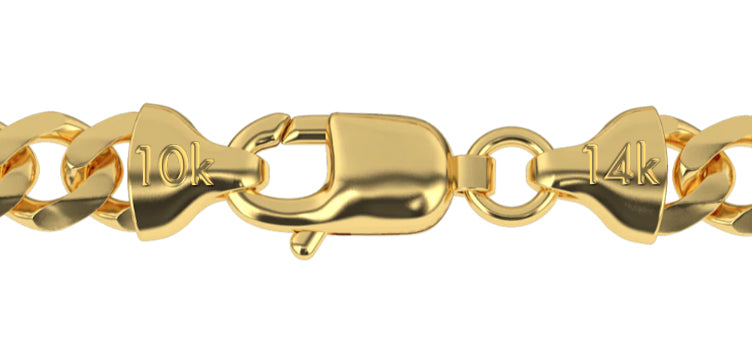"10k gold" and "14k gold" both refer to the purity or fineness of gold used in jewelry or other items, but they represent different levels of gold content:
10k Gold:
"10k" stands for 10 karat gold.
In 10k gold, 10 out of every 24 parts are pure gold, while the remaining 14 parts are composed of other metals like copper, silver, or nickel.
This means that 10k gold is approximately 41.7% pure gold.
10k gold is less pure compared to higher-karat gold, which makes it more durable and suitable for everyday wear.
It is less expensive than higher-karat gold, making it an affordable option for those who want the look of gold without the higher price tag. The color of 10k gold can vary depending on the specific alloy used, but it often has a slightly less vivid color compared to higher-karat gold.
14k Gold:
"14k" stands for 14 karat gold.
In 14k gold, 14 out of every 24 parts are pure gold, while the remaining 10 parts are made up of other metals, typically alloys like copper, silver, or nickel.
It has a higher gold content and is more valuable than 10k gold. Like 10k gold, the color of 14k gold can vary depending on the alloy used. For example, 14k yellow gold is made by mixing pure gold with copper and silver, resulting in its classic golden hue.
In summary, both 10k and 14k gold contain alloyed metals along with pure gold, but 14k gold has a higher gold content (approximately 58.3%) compared to 10k gold (approximately 41.7%). This difference in purity affects factors like durability, color, and price, allowing individuals to choose the gold type that best suits their preferences and budget.

